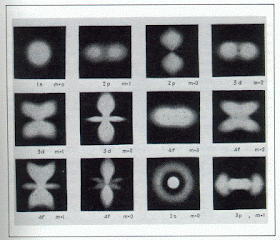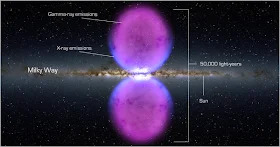Prior to reading this post, please acquaint yourself with "Start Here: A Simple Explanation--Basic Principles" in the column on the right side of the screen. The Tao Te Ching, or Book of the Way, is an ancient Chinese collection of 81 wisdom verses. In the "Simple Explanation” model, the Tao spoken of by Lao Tzu refers to the metaversal information and principles of organization that have informed our universe since the moment before creation. Non-being refers to clearing your personal UC of earthly memes and karma. Non-action refers to allowing the original universal UC to direct your personal UC for the greater good. Here is the 18th verse of the Tao Te Ching, which I have translated directly into Simple Explanation terminology from an original verbatim translation by Jonathan Star.
This verse of the Tao Te Ching shows how sadly misguided is the human condition. It all begins by not acknowledging, listening to, and enacting the metaversal plan. Once off the beam of truth, look what follows... lying, hypocrisy, discord, and chaos. And the need for a class of do-gooders hired to do what cannot otherwise be accomplished due to lack of cooperation.
It's interesting to note that the first efforts the individualized UCs enact on their own is filled with all good intentions. This is "me" doing my ideas of good deeds with all best intentions. But acting out of one's ego-centered point of view is what gives rise to self-righteousness, according to Verse 18. (I am being good! What is the matter with you!?)
Clever minds, self-promoting schemes, and the accumulation of "knowledge," i.e. your personal meme bundle, follow quickly on the heels of the good intentions.
Once the personalized UC becomes self-righteous and full of its own memes, lying and hypocrisy are the inevitable result. Why? Because we are all flawed, imperfect beings when operating out of ego rather than the leading of the universal UC. And who wants others to know how flawed and imperfect we are? Especially if we are holding ourselves out to be more righteous than they are. Verse 18 says it is, ironically, self-righteousness that drives lying and hypocrisy.
At this point in Verse 18, there is a breakdown of familial and tribal relations within one's own family and tribe. Rules of conduct are imposed rather than authentic. Preaching about tribal "isms" replaces real relations of harmony and cooperation. If there is a breakdown of the parent-child relationship, or between siblings, or husbands and wives, then there's a lot of talk about how important family values are and the importance of duty and shows of devotion. But these are now hollow, rule-bound memes rather than vibrant, living relations. Borders are erected around groups of UCs, labeling "Us" against "Them," because once your primary relationships are no longer distinguished by love, differences between "us" and "them" need to be noted and emphasized, elsewise how are "we" any different than "them"?
Once true harmony and cooperation have ceased, loyal servants are needed to do the work. These servants can be government workers, social workers, household servants... any job that needs to be done that would not otherwise be done due to people following their own private ambitions rather than instantiating the metaversal plan. And note how Lao Tzu specified "loyal" servants... on the servant's part, disciplined loyalty and following someone else's orders has replaced spontaneous action in the here and now and the freedom to do what needs to be done.
All of these outcomes arise from not being in the here and now and instantiating the metaversal plan.
Tao Te Ching, Verse 18
When metaversal principles are disregarded--
Doctrines of good deeds and self-righteousness emerge, along with clever, scheming minds and accumulations of memes.
Doctrines of good deeds and self-righteousness emerge, along with clever, scheming minds and accumulations of memes.
This gives rise to a great deal of lying and hypocrisy.
Consequently, relationships between UCs are no longer harmonious.
Preaching about "Duty and Devotion," "Family Values," and "Us Against Them" gives rise to discord and chaos.
Because of the breakdown of authentic cooperation with others, loyal servants appear.
***************************************************
This verse of the Tao Te Ching shows how sadly misguided is the human condition. It all begins by not acknowledging, listening to, and enacting the metaversal plan. Once off the beam of truth, look what follows... lying, hypocrisy, discord, and chaos. And the need for a class of do-gooders hired to do what cannot otherwise be accomplished due to lack of cooperation.
It's interesting to note that the first efforts the individualized UCs enact on their own is filled with all good intentions. This is "me" doing my ideas of good deeds with all best intentions. But acting out of one's ego-centered point of view is what gives rise to self-righteousness, according to Verse 18. (I am being good! What is the matter with you!?)
Clever minds, self-promoting schemes, and the accumulation of "knowledge," i.e. your personal meme bundle, follow quickly on the heels of the good intentions.
Once the personalized UC becomes self-righteous and full of its own memes, lying and hypocrisy are the inevitable result. Why? Because we are all flawed, imperfect beings when operating out of ego rather than the leading of the universal UC. And who wants others to know how flawed and imperfect we are? Especially if we are holding ourselves out to be more righteous than they are. Verse 18 says it is, ironically, self-righteousness that drives lying and hypocrisy.
At this point in Verse 18, there is a breakdown of familial and tribal relations within one's own family and tribe. Rules of conduct are imposed rather than authentic. Preaching about tribal "isms" replaces real relations of harmony and cooperation. If there is a breakdown of the parent-child relationship, or between siblings, or husbands and wives, then there's a lot of talk about how important family values are and the importance of duty and shows of devotion. But these are now hollow, rule-bound memes rather than vibrant, living relations. Borders are erected around groups of UCs, labeling "Us" against "Them," because once your primary relationships are no longer distinguished by love, differences between "us" and "them" need to be noted and emphasized, elsewise how are "we" any different than "them"?
Once true harmony and cooperation have ceased, loyal servants are needed to do the work. These servants can be government workers, social workers, household servants... any job that needs to be done that would not otherwise be done due to people following their own private ambitions rather than instantiating the metaversal plan. And note how Lao Tzu specified "loyal" servants... on the servant's part, disciplined loyalty and following someone else's orders has replaced spontaneous action in the here and now and the freedom to do what needs to be done.
All of these outcomes arise from not being in the here and now and instantiating the metaversal plan.




























